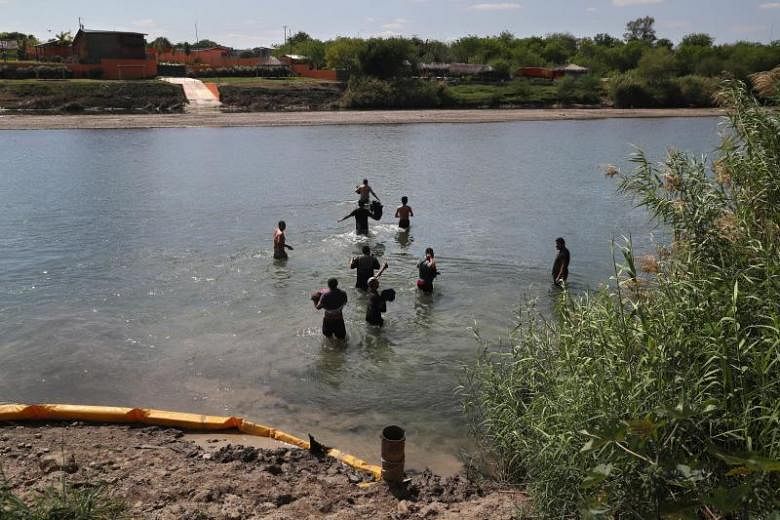WASHINGTON - A typical pattern in Mexico of corruption and lax prosecution, fuelled by money, has been helping to facilitate the rampant smuggling by criminal networks of migrants from Central America to the United States.
The persistence of human smuggling was thrown into sharp relief by the death of 10 migrants found in a closed truck in the summer heat of San Antonio in Texas over the weekend.
The smuggling incident itself was not uncommon. "This happens more often than we care to imagine," Mr Jonathan Ryan, executive director of RAICES in San Antonio, which provides legal services to immigrants, told USA Today. "We see it day in and day out in our offices."
According to US Customs and Border Protection, agents in the Laredo area of Texas found 111 illegal migrants between July 4 and 8 alone, many of them locked in big trucks or lost in open country after being abandoned by smugglers.
The migrants were from Mexico, Ecuador, Guatemala and the Dominican Republic. In several cases, drivers of the vehicles were arrested.
Criminal organisations "view these individuals as mere commodities", Laredo Sector Assistant Chief Patrol Agent Gabriel Acosta said on the agency's website.
The problem is complex, beginning with chronic poverty and violence in politically volatile and corrupt central American countries, and increasingly sophisticated criminal groups - referred to as "coyotes" - that smuggle people including entire families to the US through a complex logistical chain.
Organised criminal groups involved in smuggling migrants across the border between Mexico and the US appear to be based largely in Mexico and Central America, the UN Office on Drugs and Crime (UNODC) says. "For the smugglers, there appears to be little risk of arrest, as they normally pretend to be irregular migrants themselves and are repatriated rather than apprehended," the UNODC says on its website.
It is estimated that Latin Americans account for around 3 million illegal entries into the US each year, generating an annual income of about US$6.6 billion (S$8.9 billion) for criminals, says the UNODC.
The route is lubricated with money. For example, criminal groups in Mexico that control territories along the border charge fees to people smuggling networks, says Dr Guadalupe Correa-Cabrera, a fellow at the Wilson Centre specialising in trafficking in persons, irregular immigration and transnational organised crime in Central America and Mexico.
Border security has been tightened on both the US and Mexican sides since a wave of migrants from Central America came northwards in 2014. Mexico has also tightened security and stepped up deportations on its southern border.
Yet, prosecution is the big problem, says Dr Correa-Cabrera. "There is good coordination between the US and Mexico on the border. But there is a high level of corruption including at the government level (in Mexico)," she told The Straits Times in an interview. "It is mostly low-level smugglers who are prosecuted; they have been unable to dismantle the criminal networks."
Experts say countries across the region have failed to adequately coordinate a response to the issue.
"Agreements that exist between countries are aimed at cracking down on people to keep them from crossing borders," Ms Martha Sánchez Soler, coordinator of the Mexico-based Mesoamerican Migrant Movement told Inter Press Service (IPS) in June. "But there is not one bilateral or trilateral agreement that really seeks to solve the problem in an integral manner," she added.
Because border security has been tightened and the US Border Patrol operates for about 160km within the US border, the logistics chain must extend into the US, which renders operations more complex and therefore more expensive, says Dr Correa-Cabrera.
For someone desperate enough to leave poverty and violence in Guatemala, El Salvador or Honduras, it can cost up to US$8,000 for the services of smugglers to get to the US. Families go into debt to raise the money.
"The smugglers used to charge US$4,000 last year, that has almost doubled," Sister Norma Pimentel, executive director of Catholic Charities of the Rio Grande Valley (CCRGV) in Texas, told The Straits Times over the telephone.
The CCRGV runs a "respite centre" in McAllen, Texas, which sees a steady stream of 10 to 25 migrants, many of them women and children, visiting every day for shelter and guidance. Most had used the services of human smugglers, she said.


